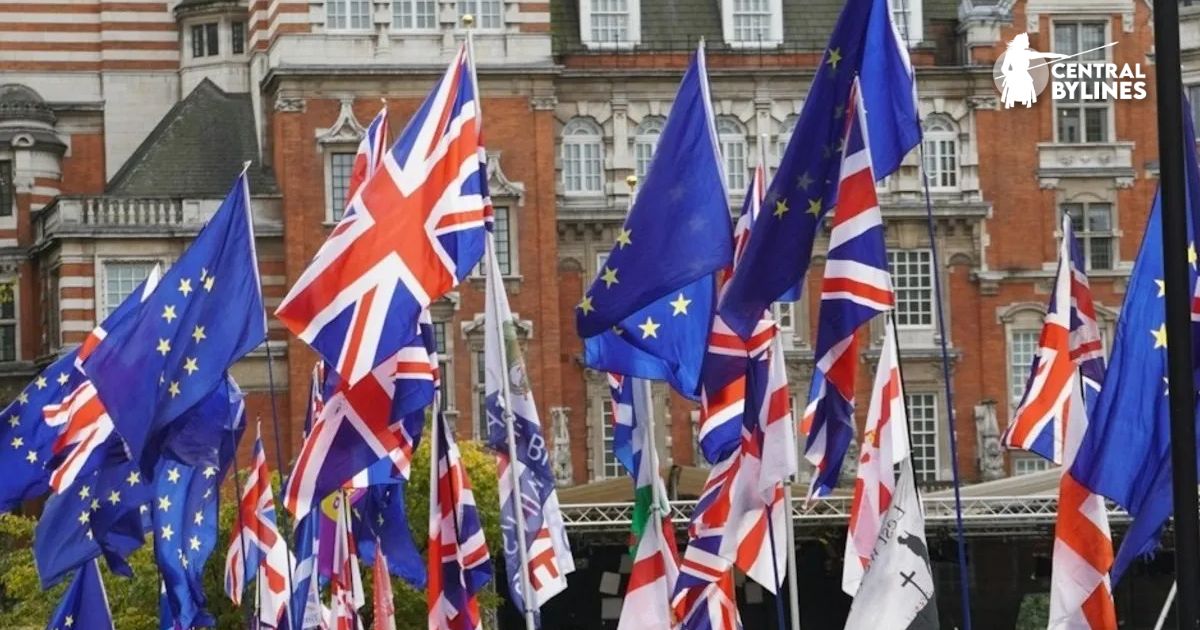Nearly a decade on from the Brexit referendum and almost five from when Brexit was supposedly ‘done’, voters who are genuinely happy with the Brexit we have are few and far between, and no political party is seriously suggesting that it’s a success.
Is it time to learn from the mistakes of the past and prepare the framework for a second referendum campaign with the aim of giving the public informed choices based on realistic options?
Brexit referendum 2016: flawed and impossible to achieve
The flaws in the first referendum’s campaigns are well documented, and the vote to leave the EU in the ballot itself was an oversimplified option with no definitive outcome, leading to politicians and not the public deciding its direction. The information available to prove Brexit’s negative economic implications are available and we have now delayed full implementation of the Trade and Cooperation Agreement (TCA) eight times on the UK side of our hard border with the EU.
This shows no sign of ever being possible as we are simply not set up for life outside of the single market. This means that we are unaware what the effects of this would be, because the government know to fully implement the TCA UK side would cause chaos at our borders and have catastrophic consequences for our supply chains.
Most of the economic hardship we are experiencing due to Brexit is a result of the decision to leave the EU single market, the basis of which are the ‘four freedoms’ that enable the free movement of people, goods, services and capital. This enables frictionless trade between the previously 28 EU member states (plus the 4 EFTA members who are Single Market (SM) members), now reduced to 27 with Great Britain on the outside looking in on a market of 447 million consumers and 23 million companies, all of whom form a bloc of our closest geographical trading partners.
Single market myths and fear of freedom of movement
Ending freedom of movement (FOM) was seen as being non-negotiable due to the promises to close our borders to EU migrants, although it was never explained that it was impossible to be a SM member without FOM. Boris Johnson promised “access to the Single Market” without accepting FOM but also assuring Brits that we “will still be able to go and work in the EU; to live; to travel; to study; to buy homes and to settle down”.
These things are not compatible (as Brits are finding out with the 90/180 day rule, for example), demonstrating either Johnson’s ignorance or dishonesty (potentially both). At the very least, he hid the fact that all these things would not be possible without significant changes such as visas and applying for residency.
Those who voted for Brexit to reduce immigration are seeing fewer migrants from the EU, countered with huge increases in arrivals from the rest of the world. For those who are unclear, two points: firstly, Britain needs migrant workers and businesses will always recruit them, no matter where they are from. Secondly, undocumented migrants arriving on dinghies are not using FOM.
Broken promises and damage to business
Those who hoped Brexit would be the answer to their immigration concerns are unsatisfied by the current picture, while the effects of leaving the SM and ending FOM are undeniably damaging Britain’s businesses significantly.
On top of this, despite what Johson promised, Brits can no longer exist freely in the 27 EU countries that we previously had unlimited freedom within, and unfettered access to.
To convince people that the positives of FOM vastly outweigh the negatives would likely shift opinion on Brexit more significantly than any other factor and if done properly, a weighty majority for SM membership at least would be within clear sight.
Political parties have no solutions ten years on
Labour insist that rejoining the SM and Customs Union (CU) is a red line they won’t cross, leaving us in limbo with no end in sight. The Conservatives are responsible for the TCA, so are unlikely to criticise it publicly and Reform’s leader, Nigel Farage, has admitted live on Question Time that “Brexit has failed”. None of these parties have a solution to Brexit almost ten years on from the referendum. Despite this, polling on Brexit currently has 56% of Brits of the opinion that leaving the EU was a bad idea compared to 31% who think the opposite. Polling on Britain rejoining the EU has consistently indicated that we would be in favour of it without any party seriously campaigning to do so.
One thing is for certain – Brexit certainly isn’t ‘done’. Honest, realistic options have never been seriously discussed. Now is surely the time to start planning for a referendum where people can choose a definitive outcome. I don’t hear anyone stating that they are happy with the type of Brexit we have ended up with. The answer as to which option would be backed by a majority of the public can only be settled by asking us.
What choices do we have?
This is open to interpretation, but in essence I can see three Brexit options along with the option of rejoining the EU.
- ‘No deal’ Brexit. We would operate under World Trade Organization terms and tear up the TCA.
- Keep the current ‘deal’ of the TCA and carry on negotiating on various details without rejoining the SM or CU. No FOM.
- Join the European Free Trade Association/European Economic Area (ETFA/EEA). This would mean joining the EU SM but not the CU. We would return to having the ‘four freedoms’ of movement of people, goods, services and capital and would mirror many EU laws via the EFTA court.
- Rejoin the European Union. The terms of this would have to be negotiated, and it is highly debatable whether the UK would be able to rejoin on the same terms it enjoyed prior to Brexit.
It is worth noting that all but option 4 fulfil the obligations of the vote to leave the EU that 52% of voters chose in 2016; however, putting them up against a vote to rejoin splits the vote of those still in favour of staying out. In order to negate this, two votes would be needed. The first vote would be to choose between options 1-3 to define the most popular option to stay outside of the EU. The second vote would then put the winning option from vote 1 against rejoining the EU to decide the most popular choice. This framework would hopefully not be a bad place to start.
Imperative to the next referendum’s success in settling the issue is effective communication of the implications of each option. Experts would need to be engaged, and misinformation called out and discredited. The task to do this well is huge.
Do we have time to get it ready to coincide with the ten-year anniversary of the Brexit vote and this time find out what Britain really wants? Possibly not, but it would be a damn fine way to mark the occasion.
 Download the Bylines app to get our content straight to your phone!
Download the Bylines app to get our content straight to your phone!
